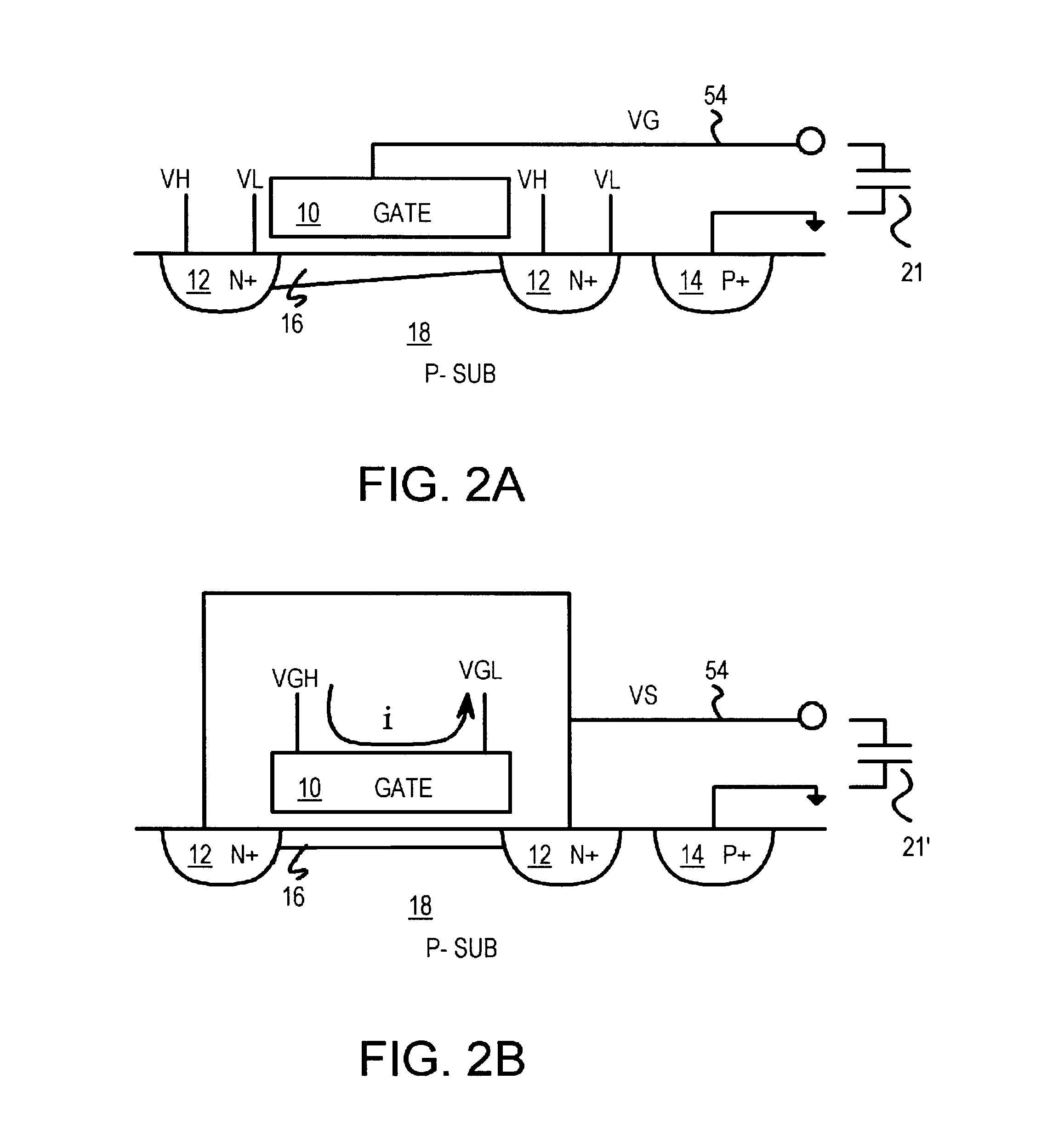Variable capacitor using MOS gated diode with multiple segments to limit DC current
a variable capacitor and diode technology, applied in the field of integrated circuit capacitors, can solve the problems of wasted area and variable capacitors that stop operating as desired
- Summary
- Abstract
- Description
- Claims
- Application Information
AI Technical Summary
Benefits of technology
Problems solved by technology
Method used
Image
Examples
Embodiment Construction
Several other embodiments are contemplated by the inventor. For example the substrate could be biased by a charge pump to a voltage other than ground. The external circuit uses the variable capacitor by connecting between line 54 and this substrate voltage. For example, the substrate could be biased to -3 volts, and the variable capacitor has a lower terminal at -3 volts. In an actual device layout, the source side can be used by itself without a drain side, or vice-versa. Using many metal contacts reduces resistance, but is not essential.
The terms source and drain are often used interchangeably, as a source / drain region can function as a source or a drain depending on the applied bias voltages. The source and drain regions do not have to have identical layouts or identical voltages. The drain can be biased to different voltages, although some current can flow from drain to source when the source and drain voltages are not equal. The variable capacitor could have only a source and n...
PUM
 Login to View More
Login to View More Abstract
Description
Claims
Application Information
 Login to View More
Login to View More - R&D
- Intellectual Property
- Life Sciences
- Materials
- Tech Scout
- Unparalleled Data Quality
- Higher Quality Content
- 60% Fewer Hallucinations
Browse by: Latest US Patents, China's latest patents, Technical Efficacy Thesaurus, Application Domain, Technology Topic, Popular Technical Reports.
© 2025 PatSnap. All rights reserved.Legal|Privacy policy|Modern Slavery Act Transparency Statement|Sitemap|About US| Contact US: help@patsnap.com



